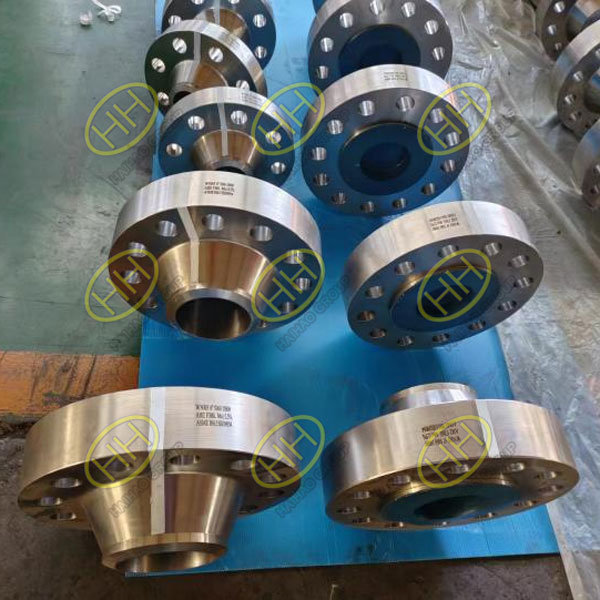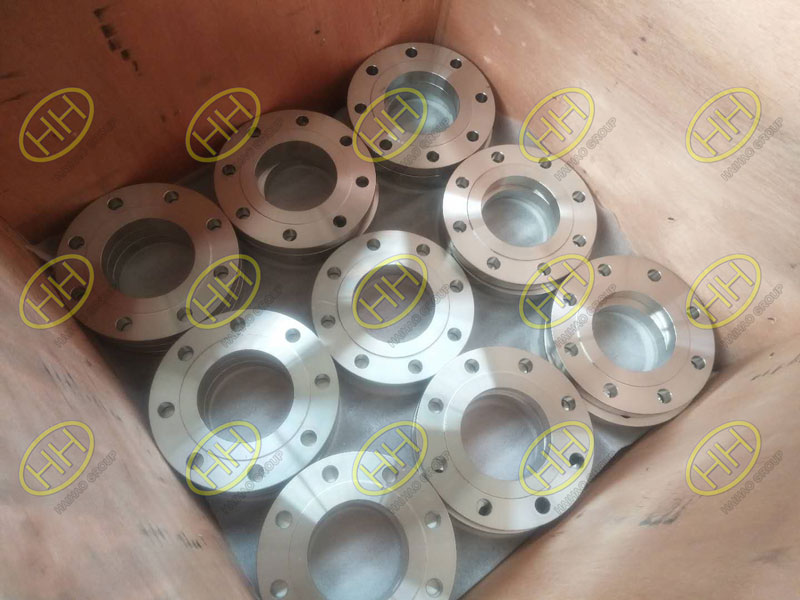Things to note when welding stainless steel flanges
Stainless steel flanges, despite their durability and corrosion resistance, can encounter several challenges during the welding process. Here are some common issues to be aware of:
Carbonization Due to Repeated Heating: Repeated heating during welding can lead to the dissolution of carbides in stainless steel flanges, reducing their corrosion resistance and physical properties. It’s essential to avoid excessive reheating to prevent the harmful effects of carbide precipitation.
Controlled Welding Current for Corrosion Prevention: To prevent corrosion caused by overheating during welding stainless steel flanges, it’s crucial to control the welding current effectively. A slightly lower welding current, around 20% less than that used for carbon steel electrodes, along with a shorter arc length and narrow weld seams, is recommended.
Maintaining Dryness of Welding Rods: Welding rods should be kept dry during welding operations to avoid contamination. Titanium-calcium electrodes should be dried at 150°C for one hour, while low-hydrogen electrodes should be dried at 200-250°C for the same duration. Moisture or oil contamination can lead to poor weld quality and increased carbon content in the welded joints.
Preventing Sensitization and Cracking: Stainless steel flanges welded with chromium stainless steel plates can be susceptible to sensitization and subsequent cracking. If using the same type of chromium stainless steel electrodes for welding (e.g., G202, G207), post-weld heating above 300°C and slow cooling below 700°C is necessary. If post-weld heat treatment is not feasible, alternative electrodes (e.g., A107, A207) should be considered.
Surface Preparation and Flatness: The surfaces of stainless steel flanges should be flat and smooth, with permissible shallow circular grooves. Avoidance of scars, sand holes, and radiating pipe grooves is essential. The flange faces should be symmetrical and securely aligned.
Alignment and Centering: The centerline of the flange’s planar diagram should be perpendicular to and bisect the pipeline’s centerline, with a maximum allowable error of 1-2.5 millimeters.
Tolerance for Hole Spacing and Alignment: Tolerances for hole spacing parallel to the flange surface should be within 0.5-1.0 millimeters, and the deviation between the centerline of the flange holes and the pipeline centerline should be within 1-3 millimeters. Allowable errors for the flange’s planar diagram should be within 0.2-0.3 millimeters.
Managing Welding-Induced Stress and Deformation: Attention should be paid to the stress and deformation induced during the welding of stainless steel flanges to ensure the integrity of the welded joints and prevent structural failures.
By addressing these common issues with stainless steel flange welded pipes, manufacturers and welders can ensure the quality, durability, and performance of the final products.



